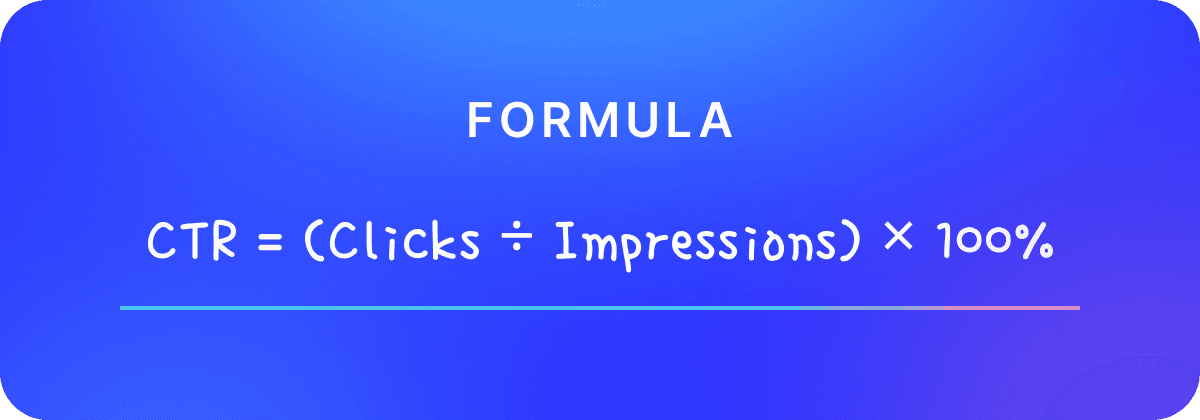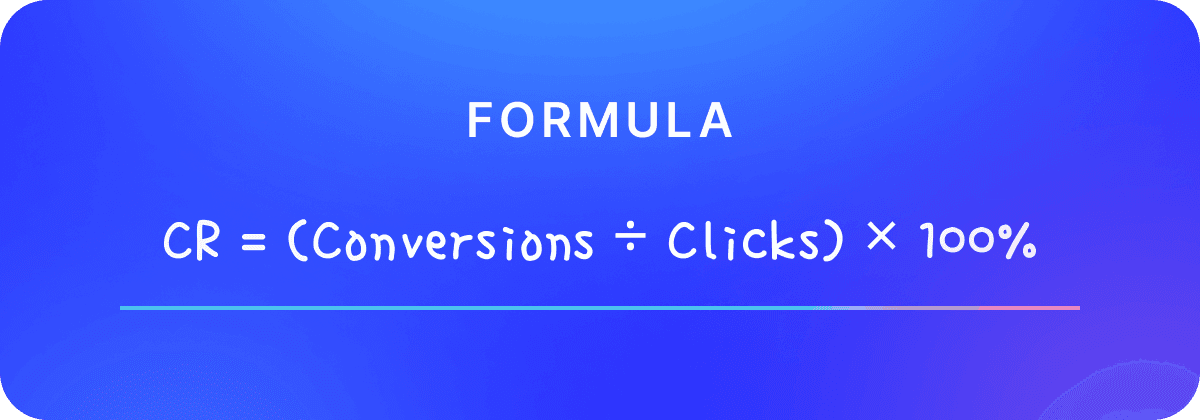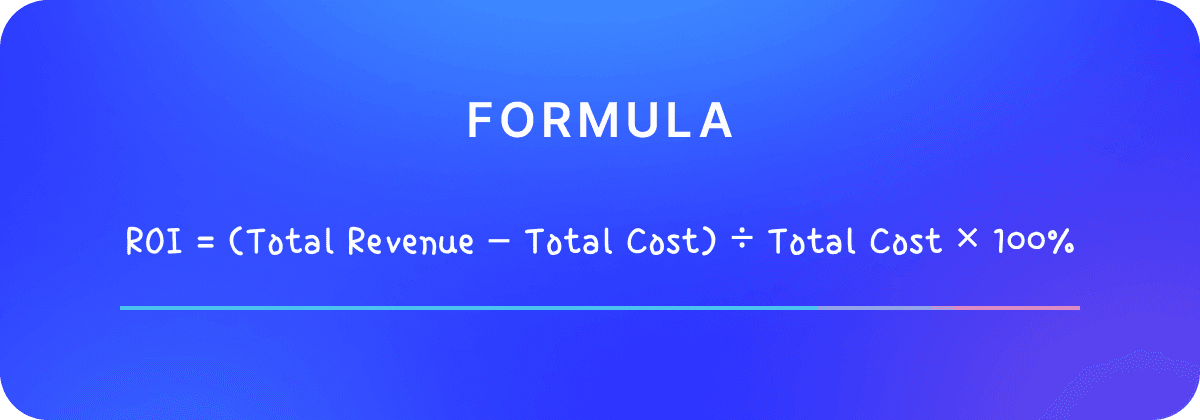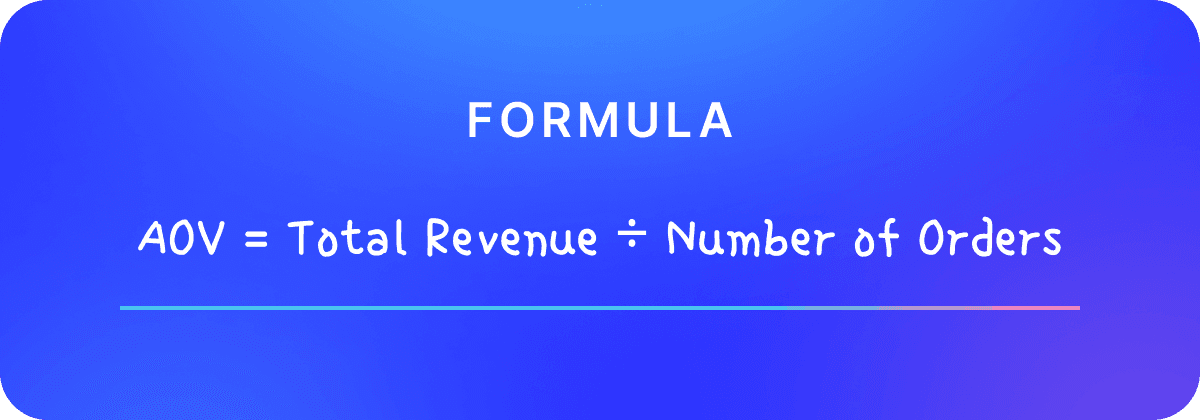In affiliate marketing, success rarely comes down to luck. Behind every campaign that scales profitably lies a clear understanding of numbers: what’s working, what’s leaking budgets and what deserves more investment. The truth is simple. If you can’t measure affiliate marketing performance, you can’t improve it.
Yet many affiliates still run campaigns on gut feeling, checking clicks or conversions only in passing. That’s a recipe for wasted spend and missed growth opportunities. The real game-changer is knowing which affiliate marketing metrics matter most and how to read them in context. Think of them as your campaign’s vital signs — each one tells you whether you’re moving closer to profit or drifting off course.
This playbook is designed to cut through the noise. We’ll walk through every essential affiliate marketing KPI worth tracking, explain how to tie them back to business goals and share practical ways to turn raw data into higher ROI. By the end, you’ll not only know which of these are KPIs in affiliate marketing but also how to use them for smarter, more sustainable growth.
Affiliate KPIs Explained: The Numbers That Indicate Success or Failure
What KPIs Really Mean in This Space
Think of KPIs as the campaign’s dashboard. Instead of guessing whether your latest creative actually works, a KPI in affiliate marketing shows you proof in real time. They answer the only question that matters: are you making money or losing it? And in an industry where margins shift by the hour, that clarity is gold.
Why Consistent Tracking Changes Everything
1. Smarter decisions, fewer blind spots It’s easy to chase “gut feelings” in digital marketing, but knowing how to measure the performance of your affiliate marketing campaign saves you from burning your budget. Numbers cut through noise, telling you exactly where to push harder and where to pull back.
2. Getting more out of every dollar Ad spend is an investment, not a gamble. Tracking the right affiliate marketing metrics is how you turn random clicks into sustainable returns. The result? A stronger affiliate marketing ROI without inflating costs.
3. Finding your true winners Some offers, creatives and traffic sources will quietly outperform the rest. Without KPIs, you might never notice. With them, you know where to double down and scale.
4. Fixing leaks before they sink you Campaigns can go south quickly. KPIs act like an early warning system: if CTR tanks or CPL creeps up, you see it in time to pivot.
5. Building growth you can actually repeat Short-term wins are nice, but long-term affiliates play the compounding game. Learning how to measure affiliate marketing consistently is how you move from lucky breaks to a business that scales on purpose.
The Must-Track KPIs for Every Affiliate Campaign: A Deep Dive
Traffic & Engagement KPIs: Understanding Your Audience Interaction
Before revenue comes clicks, and before clicks come eyeballs. Traffic and engagement KPIs are the first signals that show whether people notice your campaigns and feel curious enough to interact.
Impressions: How many times your ad was displayed
Impressions count how often your ad is shown. While on their own they don’t tell you if an ad works, impressions do reveal the scale of your reach.
Why it matters: Visibility is step one. Without enough impressions, even the best offer never gets a chance to convert.
Clicks: Measuring initial interest
Clicks track how many people moved from simply seeing your ad to engaging with it. If impressions are high but clicks stay flat, the issue isn’t reach, the issue lies in the creative or targeting.
Why it matters: Clicks are proof of interest. They tell you your ad has stopping power in a crowded feed.
Click-Through Rate (CTR): The efficiency metric

CTR combines impressions and clicks into one number that shows how efficiently your ad turns views into action.
Why it matters: CTR is the quickest way to judge creative effectiveness. A strong CTR signals that your message resonates, while a weak one means it’s time to rethink headlines, visuals or placement.
Conversion KPIs: Measuring Action and Results
Traffic gets you attention, but conversions prove that people are performing your desired action, whether that be signing up, buying or providing their contact details. Conversion KPIs indicate if curiosity is turning into real outcomes.
Conversions (Actions, Leads, Sales)
A “conversion” is simply the action that defines success for your campaign: a sale, a registration or a subscription. For affiliates, it’s usually the ultimate goal.
Why it matters: Without this metric, you can’t truly measure affiliate marketing performance. It tells you how many users reached the finish line you’ve set.
Conversion Rate (CR)

Conversion rate shows the percentage of users who didn’t just click but actually followed through.
Why it matters: CR is the health check of your advertising funnel. Even the most engaging ad won’t deliver if the landing page is slow, cluttered or unclear. A strong rate means your offer resonates and the path to action is smooth.
How to improve: Streamline the journey, test different headlines and CTAs and ensure pages load fast. Small tweaks often lead to noticeable jumps in CR.
Cost Per Acquisition / Cost Per Action (CPA)

CPA tells you how much, on average, it costs to generate one conversion,whether that’s a customer or a lead.
Why it matters: It’s one of the most critical affiliate marketing KPIs. CPA answers you the hard question: are you acquiring customers at a sustainable cost? If CPA outweighs the revenue per conversion, the campaign isn’t profitable.
Tip: Always compare CPA across offers and traffic sources. That’s where you’ll find which channels justify the spend and which are dragging down your ROI affiliate marketing efforts.
Profitability & Revenue KPIs: Gauging Your Campaign's Financial Health
Clicks and conversions tell part of the story, but profitability KPIs reveal whether the campaign is actually making money. These are the numbers media buyers and affiliates rely on to decide if scaling is worth it or if it’s time to cut losses.
Earnings Per Click (EPC)

EPC shows how much revenue, on average, you make from every click.
Why it matters: For affiliates, EPC is a quick reality check. If clicks are flowing but EPC is weak, it means the traffic isn’t turning into valuable conversions. Media buyers use EPC to compare traffic sources and decide where each dollar works hardest.
Return on Investment (ROI)

ROI is the simplest way to see if a campaign pays off. It compares what you earn with what you spend and turns that into a percentage.
If the number is above zero, you’re making money. If it’s below, the campaign is costing more than it brings back. That’s why many media buyers call ROI the “make-or-break” metric.
Improving affiliate marketing ROI rarely comes from one big move. It’s usually the sum of small adjustments: refining targeting, testing new ad creatives, trimming wasted spend and polishing the landing page experience. Over time, these tweaks shift the balance from the red into the black.

AOV measures how much a customer spends each time they place an order.
It’s useful because bigger baskets mean more revenue without necessarily increasing traffic or conversions. AOV also points to upsell and cross-sell opportunities. For example, if the average order is $40, adding a simple bundle offer could lift it to $50 — a small change that scales fast when you’re driving volume.
Choosing the Right KPIs: Aligning Metrics with Your Campaign Goals
One of the biggest mistakes affiliates make is treating every KPI as equally important. In reality, different goals demand different benchmarks. If you’re chasing brand awareness, the metrics you track won’t be the same as when you’re focused on sales. Knowing which of these affiliate marketing KPIs are important for your specific objective is what separates a scattered effort from a clear strategy.
Not All KPIs Are Created Equal: Tailoring to Objectives
- Brand awareness: Impressions, reach and CTR give you the best read on visibility and initial engagement. Because here you’re measuring attention, not sales.
- Lead generation: For lead generation, the spotlight shifts to conversion rate, cost per lead and form submissions. The question isn’t “who saw it?” but “who cared enough to share their details?”
- Sales: Now, when it comes to sales, profitability takes center stage. ROI, CPA, and AOV become the metrics that really matter. This is where you ask: how do you measure affiliate marketing success if not by revenue and cost balance?
Prioritizing KPIs for Different Stages of the Funnel
Every funnel stage has its own “north star” metric. At the top, you focus on reach and clicks. In the middle, you measure leads and sign-ups. At the bottom, you track conversions and revenue. Thinking this way keeps you from chasing the wrong numbers at the wrong time.
Avoiding Vanity Metrics
It’s tempting to celebrate big impression counts or high click volumes. But if those don’t lead to conversions or profit, they’re just noise. These “vanity metrics” look good on a dashboard but don’t move the business forward. The real discipline in affiliate marketing is learning how to measure the performance of an affiliate marketing campaign by cutting through the fluff and prioritizing the KPIs that reflect true growth.
How to Effectively Track Your Affiliate Marketing KPIs
If you want to improve results, you need more than instincts: you need to work with numbers you can actually trust. Tracking tools are what turn raw clicks and conversions into insights that help you decide where to spend, what to cut and how to scale.
Affiliate Network Dashboards
Every network gives affiliates a built-in dashboard. It usually shows the essentials, like impressions, clicks, conversions and payouts. For a beginner, this data is often enough to spot what’s working. However, once you’re running several offers across different networks, these dashboards can often feel like looking through a keyhole. You see something, but not the whole picture.
Dedicated Tracking Platforms
That’s where tools like Voluum, Binom or RedTrack step in. They not only tell you that a conversion happened but also show where it came from, what ad or device triggered it,and how the user moved through the funnel.
Why affiliates like them:
- You can compare traffic sources side by side instead of guessing.
- One dashboard covers all campaigns, so you’re not juggling multiple logins.
- With server-to-server tracking, you receive cleaner data and avoid the mess of lost conversions.
In short, these platforms help answer the bigger question: how to measure the performance of your affiliate marketing campaign with precision, not assumptions.
Google Analytics
For publishers and site owners running affiliate offers, Google Analytics is still a goldmine. It tells you where visitors come from, how long they stay and which pages prompted their leave. Tie this back to your affiliate data, and you’ll see how to measure affiliate marketing success beyond just payouts.
MGID’s Built-In Tracking
MGID makes it easy to track performance without extra hassle. The platform supports a full variety of conversion tracking options, so you can choose what fits your setup best.
- MGID Pixel
- Postback
- Pixel via GTM
- Webhook
- Native integration with Shopify and Voluum
With these options, you get flexibility and accuracy in tracking conversions across campaigns, while keeping all the data consistent and reliable in one place.
Beyond Tracking: Using KPIs to Optimize and Scale Your Affiliate Campaigns
Tracking tells you what’s happening; subsequently, optimization is what you do with that knowledge. KPIs are more than numbers on a dashboard. They’re signals that help you decide where to double down and where to pull the plug.
Identifying Winning & Losing Elements
KPIs quickly show which ads, offers or traffic sources deserve your budget. A strong CTR means the creative is attention-grabbing, and a high CR shows the landing page can close. Conversely, if you’re spending heavily but EPC and ROI stay flat, you know exactly where the leak is.
A/B Testing with Purpose
Random testing wastes time. KPI-driven testing is sharper.
- Ads: Test different headlines, images or formats to see which drives the highest CTR.
- Landing pages: Swap layouts, CTAs or copy to lift CR.
- Budget decisions: Compare ROI and EPC across traffic sources, then shift spend to the top performers.
This is how you move from “hoping” to knowing how to improve affiliate marketing ROI with data.
Knowing When to Scale vs. When to Cut
Not every campaign deserves more spend. KPIs make the choice clearer. If ROI is solid and CPA is stable, scaling makes sense; however, if the numbers slide the other way, cutting losses early often saves more than trying to fix a sinking ship.
MGID’s Optimization Tools: CPA Tune & CTR Guard
MGID adds another layer of intelligence on top of your tracking:
- CPA Tune is MGID’s answer to affiliates who want smarter scaling without endless bid adjustments. Instead of chasing every click, the AI engine reshapes bids in real time based on conversion likelihood. Advertisers using it have seen conversion rates jump by an average of 155% (and up to 300% in some niches), while CPA fell by 30–50%. The best part: it all runs automatically, letting you focus on strategy instead of micromanaging numbers.
- CTR Guard was built to solve one of the biggest killers of affiliate performance: ad fatigue. When viewable CTR (vCTR) drops by 15% or more across three consecutive days, the tool steps in. It creates up to three fresh ad creatives, alerts you via email or dashboard and gives you the choice to approve them manually or set them on auto-launch. According to MGID, campaigns running with CTR Guard see an average 29% uplift in vCTR, helping affiliates keep performance steady even when old creatives start losing steam.
Together, these tools make your KPIs more actionable. You set the goals, and the platform helps enforce them in real time.
Common Mistakes to Avoid When Tracking Affiliate Marketing KPIs
Even the right tools and dashboards won’t save a campaign if the KPIs are used the wrong way. Here are the traps affiliates fall into most often — and how to sidestep them.
Focusing on Too Many (or Too Few) KPIs
Some affiliates obsess over every number they can find, whereas others look at only one. Both approaches mislead. If you chase ten KPIs at once, it’s hard to know what really matters. If you watch just one, you risk missing the bigger picture. The key is balance: pick the handful of affiliate marketing metrics that tie directly to your campaign goals.
Inconsistent Tracking or Infrequent Review
Data only helps if it’s consistent. Tracking one week and ignoring the next creates blind spots. Regular, structured reviews (daily for active campaigns, weekly for longer cycles) help you catch changes early. That’s how you stay on top of how to measure the performance of an affiliate marketing campaign without surprises.
Ignoring the Context Behind the Numbers
A CTR that drops overnight might look alarming, but maybe it’s just a seasonal trend or a shift in traffic quality. Numbers never live in isolation. Affiliates who last are the ones who ask why before making changes.
Failing to Act on the Data (Analysis Paralysis)
Collecting numbers isn’t the goal — using them is. Too many marketers build dashboards they never act on. If ROI falls, move the budget. If CPA spikes, rethink targeting. KPIs are meant to drive action.
Misinterpreting Data or Jumping to Conclusions
A high AOV doesn’t always mean more profits if the CPA is out of control. A big impression count doesn’t mean success if conversions are flat. Before scaling or cutting, make sure you’re connecting dots correctly. That’s the real answer to “how do you measure affiliate marketing success” — not in one metric alone, but in how they work together.
Conclusion: Make Every Click Count by Mastering Your Affiliate KPIs
Affiliate marketing is a numbers game. The affiliates who win consistently are the ones who know their KPIs, track them with discipline and act on what the data says.
Key Takeaways
- KPIs are the compass for every campaign.
- The right metrics change depending on your goal.
- Consistent tracking is what separates growth from wasted budget.
- Mastering KPIs is how you answer the bigger question: how to measure affiliate marketing success and turn campaigns into sustainable business.
Final Encouragement
Don’t let numbers intimidate you. Embrace them. The more you learn how to measure affiliate marketing performance, the more control you have over ROI, scaling and long-term growth. Every small optimization adds up, and that’s how campaigns transform from “just running” to actually winning.
Your Next Step to Affiliate Success with MGID
MGID gives affiliates the tools to put KPI tracking into practice: a built-in analytics dashboard for CTR, CR, EPC, ROI and seamless integrations with top trackers. Add optimization tools like CPA Tune and CTR Guard, and you are getting actionable insights to protect your spend and grow results.
If KPIs are the compass, MGID is the map. Join MGID and let us show you where to steer next.





